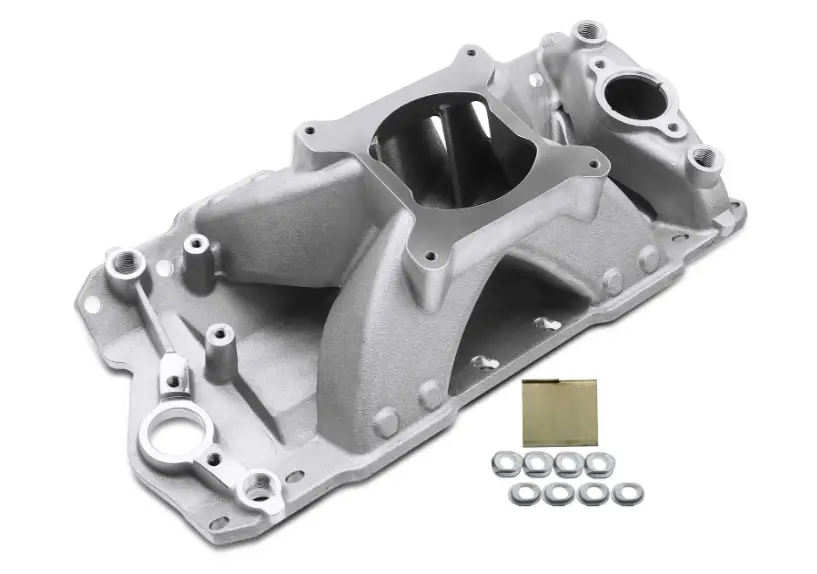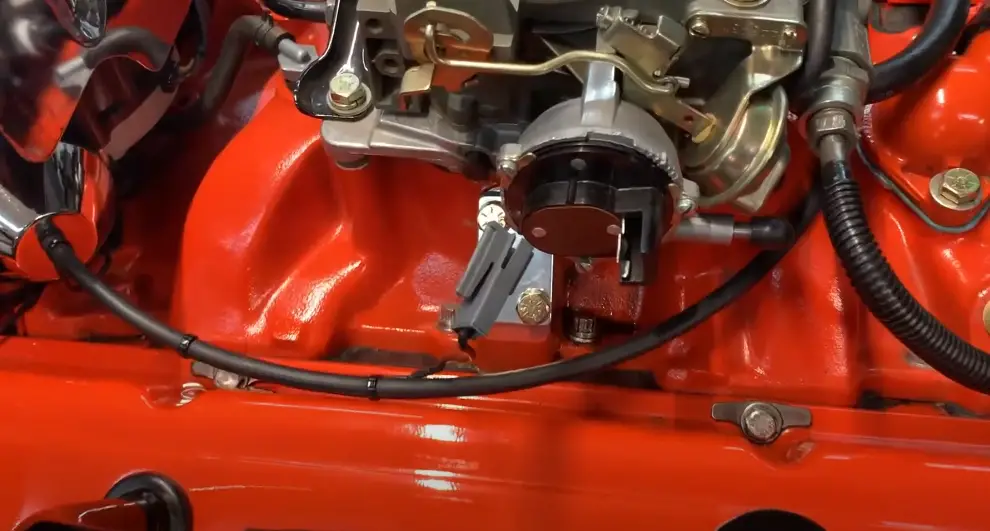Intake manifold leak symptoms include rough idling, engine misfires, reduced power, and poor fuel efficiency. You might also notice a check engine light, coolant leaks, or unusual noises like hissing from the engine bay. These leaks disrupt the air-fuel mixture, leading to decreased engine performance and potential overheating if not addressed.
The intake manifold is a critical component of the engine’s air intake system, responsible for distributing air or an air-fuel mixture to the engine’s cylinders. A properly functioning intake manifold ensures that the engine runs smoothly and efficiently. However, when there’s a leak in the intake manifold, it can lead to a variety of issues that affect your vehicle’s performance and reliability.

Contents
What is an Intake Manifold Leak?
An intake manifold leak occurs when the gasket that seals the intake manifold to the cylinder head fails or when the manifold itself develops cracks or warps. The intake manifold gasket is designed to prevent air, coolant, and oil from leaking out of the manifold. When this gasket fails or when the manifold is damaged, unmetered air can enter the engine, or vital fluids can leak out, leading to various engine problems.
Intake Manifold Leak Symptoms
Identifying the symptoms of an intake manifold leak early can prevent more severe damage to your engine. Here are some of the most common signs to watch out for:
1. Rough Idling and Engine Misfires
One of the most common symptoms of an intake manifold leak is a rough idle or engine misfire. When there’s a leak, extra air enters the engine’s intake system, causing the air-fuel mixture to become lean (too much air and not enough fuel). A lean mixture can lead to incomplete combustion, which manifests as rough idling or engine misfires. You may notice that the engine vibrates or shakes excessively when the vehicle is idling.
Key Signs:
- Shaking or vibrating engine at idle.
- Sporadic or uneven engine performance.
- Engine misfire codes appearing on a diagnostic scanner.
2. Decreased Engine Performance
An intake manifold leak can significantly reduce your engine’s performance. The leak disrupts the proper balance of air and fuel, leading to a loss of power, poor acceleration, and reduced fuel efficiency. You may notice that the vehicle struggles to accelerate or feels sluggish during normal driving conditions.
Key Signs:
- Noticeable decrease in power during acceleration.
- Sluggish response when pressing the gas pedal.
- Poor fuel economy.
3. Check Engine Light
The Check Engine Light (CEL) is a general indicator that something is wrong with your engine. An intake manifold leak often triggers this light because the engine control module (ECM) detects abnormal readings from sensors monitoring the air-fuel mixture, oxygen levels, or engine performance. The CEL might come on due to issues like engine misfires, lean air-fuel mixtures, or other related problems caused by the intake leak.
Key Signs:
- Illuminated Check Engine Light.
- Error codes related to fuel trim, air-fuel ratio, or engine misfire.
- Light may blink during severe misfire events.
4. Coolant Leaks and Overheating
In some engines, the intake manifold also serves as a conduit for coolant, directing it between the cylinder heads. A leak in the intake manifold gasket can allow coolant to escape, leading to visible coolant leaks under the vehicle or in the engine bay. Over time, low coolant levels can cause the engine to overheat, which can result in severe engine damage if not addressed promptly.
Key Signs:
- Visible coolant puddles under the vehicle.
- Low coolant levels in the reservoir.
- Engine temperature gauge reading higher than normal.
- Overheating issues.
5. Unusual Noises
An intake manifold leak can produce various unusual noises, depending on the severity of the leak. You might hear a high-pitched hissing or whistling sound coming from the engine bay. This noise is caused by air being sucked into the intake manifold through the leak, disrupting the normal air-fuel mixture and engine operation.
Key Signs:
- High-pitched whistling or hissing noise from the engine bay.
- Noise that changes with engine speed (RPM).
- Noise more pronounced when the engine is cold or under load.
6. Excessive Exhaust Emissions
An intake manifold leak can cause an imbalance in the air-fuel mixture, leading to incomplete combustion. This can result in higher levels of unburnt fuel in the exhaust, which in turn leads to increased emissions. You may notice black smoke from the exhaust or a strong smell of fuel, both of which indicate that the engine is running too rich or too lean.
Key Signs:
- Black smoke from the exhaust.
- Strong smell of unburnt fuel.
- Failed emissions test.
7. Stalling or Hard Starting
A severe intake manifold leak can make it difficult for the engine to maintain a stable idle, leading to stalling. Additionally, the leak can cause hard starting, especially when the engine is cold, as the air-fuel mixture may be too lean to support combustion during startup.
Key Signs:
- Engine stalls during idle or when coming to a stop.
- Difficulty starting the engine, particularly in cold weather.
- Engine struggles to maintain idle after starting.
Causes of Intake Manifold Leaks
Understanding the causes of intake manifold leaks can help in preventing them or diagnosing the issue more effectively. Some common causes include:
- Gasket Failure: Over time, the intake manifold gasket can deteriorate due to heat, pressure, and chemical exposure. A failed gasket is the most common cause of intake manifold leaks.
- Warped or Cracked Manifold: The intake manifold itself can warp or crack due to extreme heat cycles, poor manufacturing, or physical damage, leading to leaks.
- Improper Installation: Incorrect installation of the intake manifold or its gasket can lead to poor sealing and eventual leaks.
- Age and Wear: As the engine ages, the components of the intake manifold and gasket naturally wear out, making leaks more likely.
Diagnosing an Intake Manifold Leak
Diagnosing an intake manifold leak involves several steps:
- Visual Inspection: Check for visible signs of coolant leaks, oil leaks, or physical damage to the manifold.
- Listening for Noises: Use a mechanic’s stethoscope or a length of hose to listen for hissing or whistling sounds around the intake manifold.
- Spray Test: With the engine running, spray a flammable liquid (like carb cleaner) around the intake manifold gasket. If the engine idle changes when you spray, it indicates a leak.
- Smoke Test: A smoke test involves introducing smoke into the intake system and watching for smoke escaping from any leaks.
- Diagnostic Scanner: Use an OBD-II scanner to check for error codes related to fuel trim, oxygen sensors, or engine misfires, which can indicate a leak.

What to Do If You Suspect an Intake Manifold Leak
If you suspect an intake manifold leak, it’s important to address the issue promptly to prevent further engine damage. Depending on the severity of the leak, you might need to:
- Replace the Gasket: If the gasket is the source of the leak, replacing it should resolve the issue. This involves removing the intake manifold, cleaning the surfaces, and installing a new gasket.
- Repair or Replace the Manifold: If the manifold itself is cracked or warped, it may need to be repaired or replaced.
- Professional Inspection: If you’re unsure about the severity or source of the leak, it’s best to have a professional mechanic inspect the vehicle and recommend the appropriate repairs.
Frequently Asked Questions
Here are some FAQs about the intake manifold leakage –
1. Can I drive with an intake manifold leak?
It’s not advisable to drive with an intake manifold leak. While minor leaks might not cause immediate damage, they can lead to more serious engine problems if left unchecked, including overheating, misfires, and even engine failure.
2. How much does it cost to repair an intake manifold leak?
The cost to repair an intake manifold leak can vary depending on the vehicle’s make and model, the severity of the leak, and whether you need to replace the gasket or the entire manifold. On average, you can expect to pay between $300 and $600 for gasket replacement and potentially more for manifold replacement.
3. What happens if an intake manifold leak is not fixed?
If an intake manifold leak is not fixed, it can lead to engine overheating, poor performance, increased fuel consumption, and potential engine damage due to improper air-fuel mixture. Over time, the leak can worsen, leading to more costly repairs.
4. How often should I inspect my intake manifold gasket?
While there’s no set interval for inspecting the intake manifold gasket, it’s a good idea to have it checked during regular engine maintenance, especially if your vehicle is older or if you notice symptoms like coolant leaks, rough idling, or poor engine performance.
5. Can an intake manifold leak cause coolant to mix with oil?
Yes, in some engines, a severe intake manifold leak can allow coolant to mix with engine oil, leading to milky oil and potentially serious engine damage. This is more common in V-type engines where the manifold sits between the cylinder heads.
Conclusion
An intake manifold leak is a serious issue that can affect your vehicle’s performance, fuel efficiency, and overall reliability. By understanding the symptoms and causes of intake manifold leaks, you can take proactive steps to diagnose and repair the issue before it leads to more significant engine damage. If you suspect a leak, it’s important to address it promptly, either by performing a DIY inspection or seeking professional help.